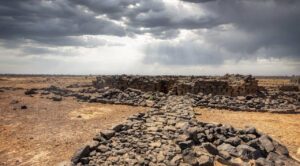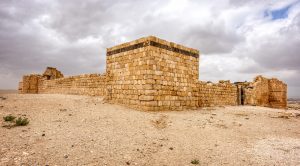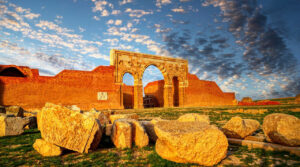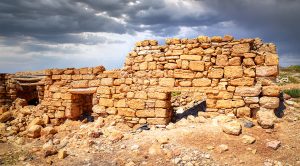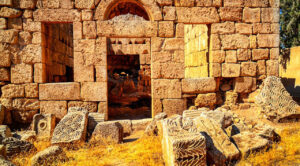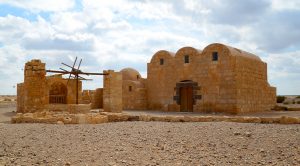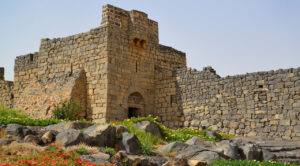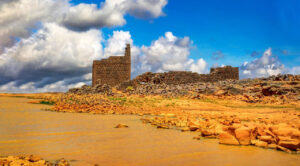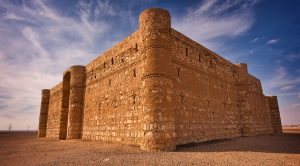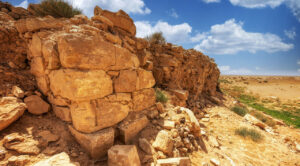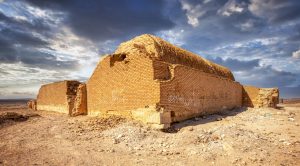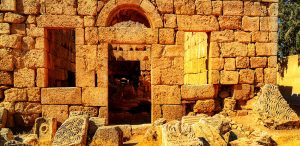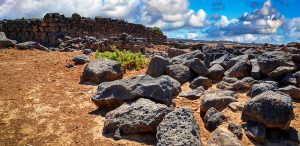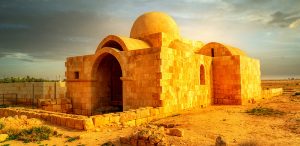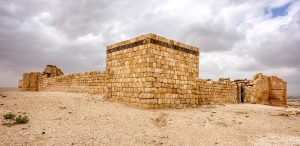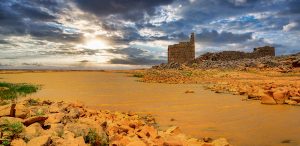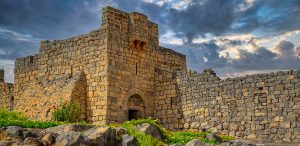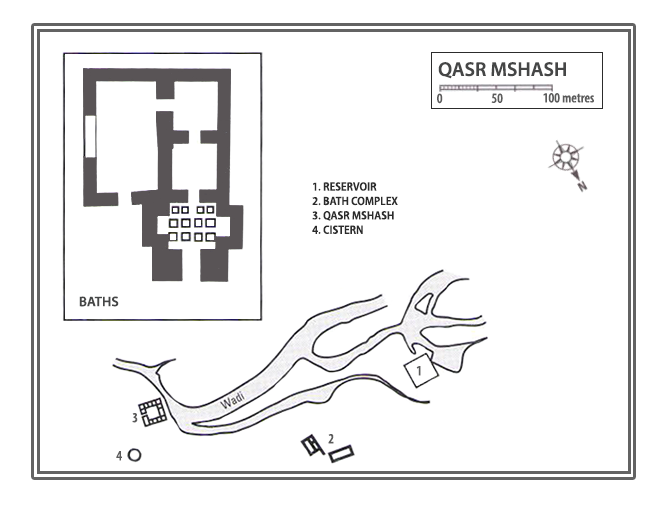Although this rather large Umayyad settlement was once a grand city in the desert, today Mshash sadly lies in virtual ruin. Standing on the very edge of the Wadi and blending into the environment, making it hard to spot, Mshash forms an extensive complex with a great variety of structures, whose most outstanding feature is the comparably large number of hydraulic installations. These include reservoirs, cisterns, and dams, which are found nearby and farther away from the central area of the complex.
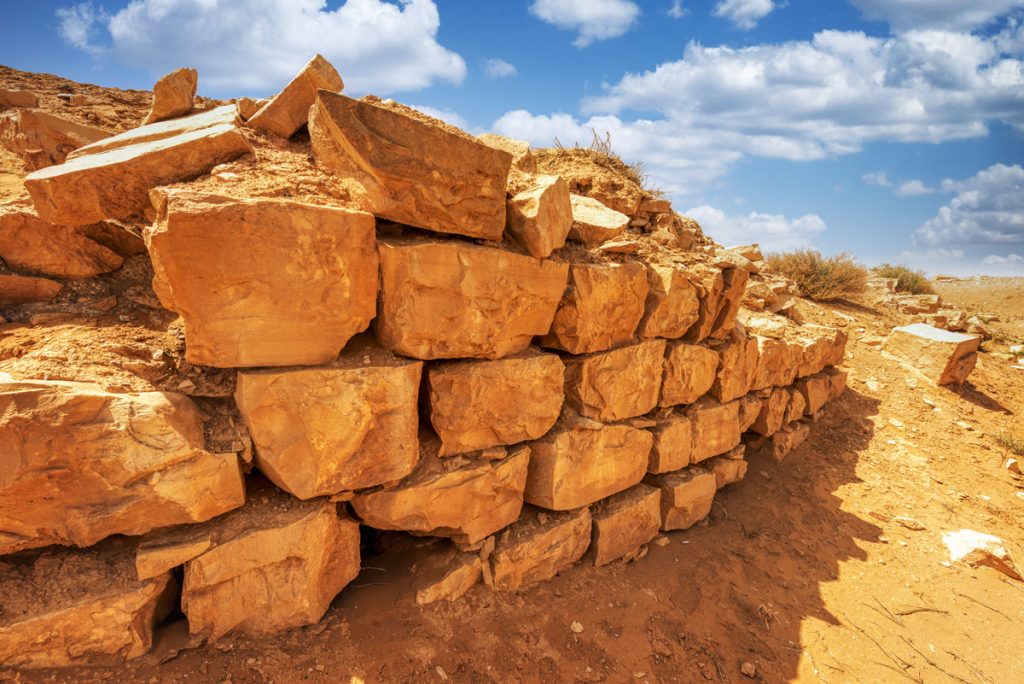
The site of Qasr Mshash covers 2 sq km and can be divided into two areas of use with a distance of 1.5 km from each other. Preliminary results of the topographical survey and geophysical research gave evidence of a core area which might have been used as a caravan halt and surrounding structures of different use. The central part of the site consists of a caravanserai-like building, a bath and a large reservoir which lies right of the track and half-buried in the sand – only the southern wall and plastered settling tank which runs into the west end are now visible. This place is surrounded by domestic structures which form a small settlement, probably used for the supply of the caravan halt.
Investigations on the water supply have revealed preliminarily that only the winter rains that drained in small watercourses from the north into Wadi Mshash were used.
There was sufficient slope for these streamlets to flow into the settlement’s cisterns and reservoirs; in addition, they could be controlled more easily than the considerably larger Wadi Mshash. The latter lies distinctly lower than the facilities for storing water so that the use of this water necessitated a means of raising water, such as a water wheel or lift, of which however no traces are present today. Further investigations are necessary to determine the conduits to the water storage facilities.
Mshash itself is a small 26 sq m building with 13 rooms around the courtyard and the entrance in the east. Its function as a halt on the way from Amman/Philadelphia and Wadi Sirhan has to be seen in relation to other Desert Castles nearby, like Qasr Al-Muwaqqar, Qasr Kharana and Qasr Amra. These places are more or less coeval and are located at a distance of 15 to 20 km from each other.
The cooperation project between the Orient Department of the German Archaeological Institute and the Jordan Department of Antiquities (DoA) began in 2011 and has several and different aims: the documentation of all archaeological sites within a radius of 10 km from the settlement, the creation of a new plan of the entire settlement site that should serve as the basis for a 3D-model, and investigations on the water supply for the site.
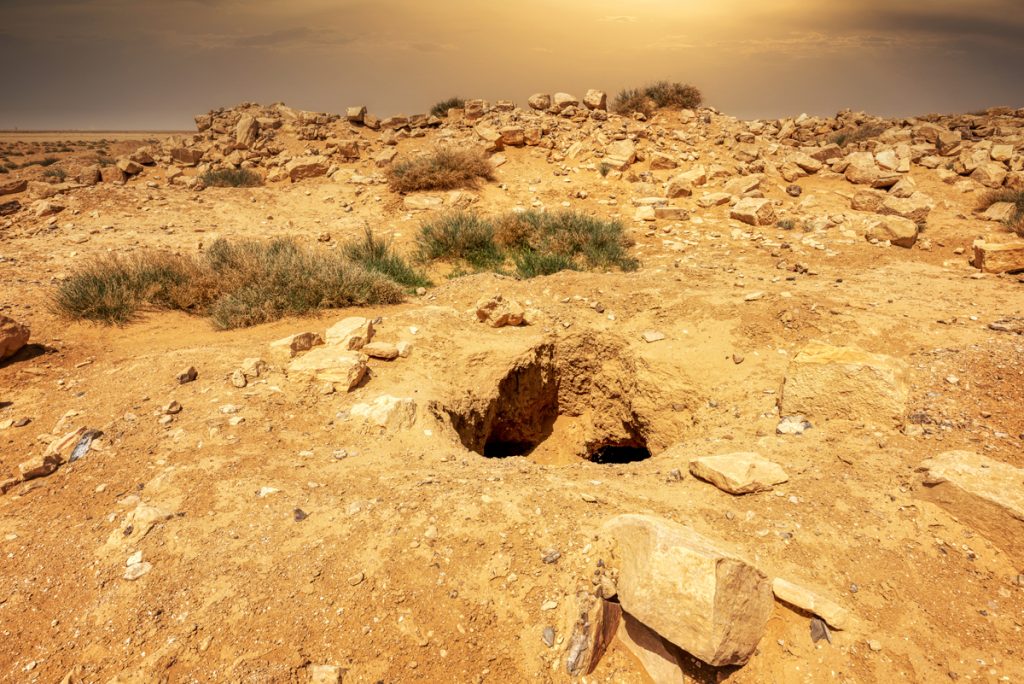
Qasr Mshash has often been assigned to the group of Early Islamic “Desert Castles”. This designation signifies palace-like complexes located in remote regions of the desert, which served mostly as temporary seats of rulers of the Umayyad times (661–750 A.D.). The structure addressed as ‘Qasr’ in Mshash, a square building with a side length of 26 m, lies on the north bank of Wadi Mshash and is still partly preserved.
A. Musil was the first to visit this complex in 1901 and to make a short description of it. A. Stein documented it in detail during his Limes project in 1939. The site was visited anew and described only later, at the beginning of the 1980s, by G. King, during a large-scale survey on the documentation of early Byzantine and Early Islamic ruins in northern Jordan. The excavations that followed in 1982 and 1983 under the direction of G. Bisheh were focused on the Qasr, the bath and one cistern. In 2011 work was resumed in Qasr Mshash once again, foremost with questions about the water supply of this place, whose structure and function was hitherto hardly known.

